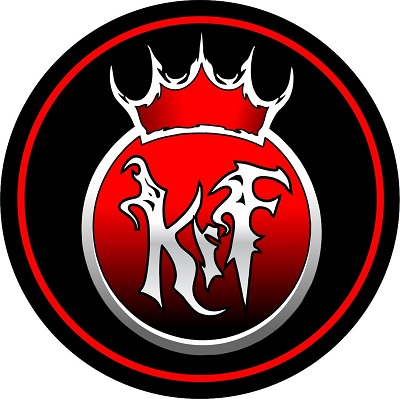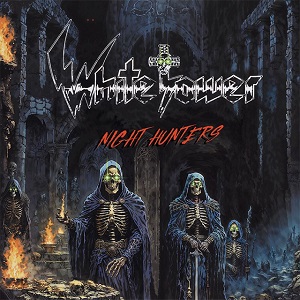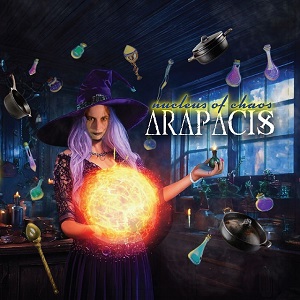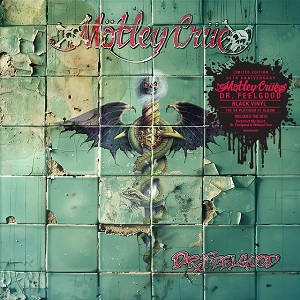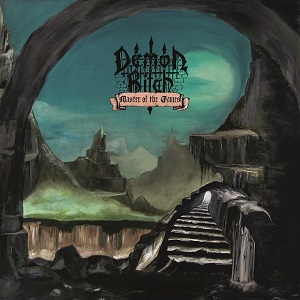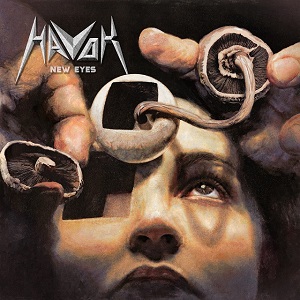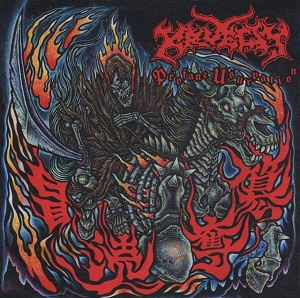VAN HALEN Meets JOSÉ FELICIANO In "Ain't Talkin' 'Bout Feliz Navidad" Mashup (Video)
December 10, 2022, 2 years ago

Mashup master Bill McClintock has returned with a new mashup, featuring Van Halen's "Ain't Talkin' 'Bout Love" and José Feliciano's "Feliz Navidad". The guitar solo adapted and played by McClintock himself.
Every guitar player who has thought of putting together a shredding solo owes Eddie Van Halen a debt of gratitude. Much like Chuck Berry had done for the six string all the way back in the ‘50s, Eddie will be looked at in the exact same way, revolutionizing the guitar with his tapping licks from the minute that the first Van Halen record caught fire in the late ‘70s. Even with a man as skilled as Eddie though, there are always those solos that are a cut above the rest. Throughout every Van Halen project and beyond, Eddie had his hand at giving us some of the most savage solos of his time, either making something that could rip your head off or making odd sounds on his guitar that made you wonder what the hell he was even doing.
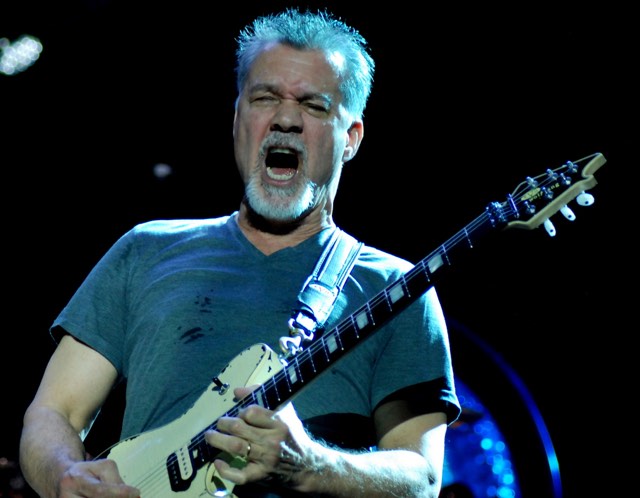
Just because it’s popular doesn’t mean it’s the best though, and some of the best work that Eddie ever created was normally in the deep cuts when he was in Van Halen (Sorry, MJ’s “Beat It.” You’ve been politely excused). If you were to go through any one of VH’s albums though, you aren’t going to find many subpar Eddie performances though, always looking for a different way to twist his guitar playing into something that he had never heard before. Eddie might not be here anymore to play all of those iconic riffs, but we will always have the initial recordings to look back on the guitar giant that walked the Earth.
“Eruption” - Van Halen
And now we arrived…the song that made millions of us want to play guitar in the first place. In just under 2 minutes, “Eruption” was what made people turn heads and wonder who the hell this new guitar player on the scene was, making Eddie the new guitar hero and the king of two hand tapping licks. Which is strange considering that what you hear on the final recording wasn’t even supposed to happen like this. Not one for playing solos by themselves, Eddie was originally hesitant to record “Eruption,” reserving it more as a crowd pleaser whenever the band would play in the West Hollywood clubs. Just before a show in Hollywood though, Ted Templeman recorded this during Eddie’s soundcheck, capturing a few minutes of Eddie warming up his fingers for the night’s activities and breaking down every single piece of his guitar prowess.
While the basics of the first piece of the song is just sped up versions of classic blues licks, there are subtle hints of brilliance in every single facet of this song, turning different shredding moments into hooks like the rapid fire tremolo runs midway through the song. It may have seemed intimidating for anyone to match this kind of intensity at the time, but no one was ready for what was to come at the very end of the song, with Eddie launching into his now iconic tapping licks and creating a singular piece of music out of the whole thing, sounding a lot closer to a musical symphony done on just one instrument. Although rock and roll may be looked down upon by the more high brow connoisseurs of music, “Eruption” is still one of the greatest pieces of music to come out of the 20th century, worthy of being looked at in the same way that people still listen to Beethoven or Mozart.
“Mean Street” - Fair Warning
For all the shred that Eddie could pack into one song, people often forget about his rhythm playing as well. Eddie always prided himself on his rhythm more than anything, and listening to the backing tracks gives you perspective on how in the pocket he was playing off of his brother in the back. Since he was also an amazing lead player though, it wasn’t going to be long before Eddie found a way to combine the two into one solo. While Fair Warning might be the greatest Van Halen record for guitar geeks, the opening of “Mean Street” gives you everything you could ask for, sounding like pure mayhem behind the fretboard as the song opens up, as if the mixers were splicing bits and pieces of tape together to get what they wanted. There’s no studio trickery here though, with Eddie just doing different tapping on his guitar before the song really kicks in.
Finding different harmonics that work well against each other, there’s practically a jungle rhythm going on for the first half of the solo, creating different cross rhythms on every string that would be more complicated than any Tool song would be. This was just coming as second nature to Eddie though, and the ending of the solo actually brings more mayhem into the mix, trading in the harmonics for actual chords and sounding like the whole mix is going to come crashing down at any minute. This was only the build up though, and the song gets even more down and dirty when the rest of the band kicks in, with Eddie trading between the heavy riffs and using the whammy bar to create a new solo towards the back end of the song. They may have still been on top of the world, but this was our first clue that Fair Warning was about to get nasty.
“Ice Cream Man” - Van Halen
Okay, so it might seem a little bit cheeky to put one of Van Halen’s cover songs on a list like this. Even though they may have brought a great spin to their version of the Kinks’ “You Really Got Me,” “Ice Cream Man” feels more like a novelty song than anything else, as David Lee Roth takes to acoustic guitar and doesn’t even try to hide the sexual innuendos behind every single one of these lines. There are two identities to this song though: before and after Eddie kicks the song into high gear. Although the band don’t show for over a minute into the song, Eddie delivers a ripping solo that was never in the original song to begin with, having the entire song come to a stop so he could shred his lead before coming back without missing a beat a few measures later.
Though the tapping licks might not have been new next to the rest of the debut, the actual stretches are what will kill you on this one, with Eddie outlining different chords and creating tapping lines that were never supposed to be performed by human hands, reaching all the way to the top of the neck of the guitar while keeping everything rooted to the main motif of the song. The back half of the solo is no slouch either, almost sounding like a scat singer playing off the swing beat in the back, creating a melody that you could practically sing as much as you could play whenever you picked up your guitar. Even if someone else wrote it, a song was a song, and Eddie was going to deliver whenever someone hit ‘RECORD’ on the console.
“Little Guitars (intro”) - Diver Down
One of the main elements that gets neglected in Van Halen’s catalog are the tracks behind the solos. As much as guitar players might want to fast forward to the interesting parts, Eddie has always prided himself on some of the different phrases that he’s able to put together, never being one to just shred for the hell of it. It always had to be a fully fleshed out piece of music, and the intro to “Little Guitars” could practically be a song by itself. While the initial idea for the song was centered around David Lee Roth meeting a Spanish lady, this piece immediately puts us in that mind set, with Eddie playing different Spanish-influenced guitar lines on his electric before the rapid fire tremolo begins.
Almost sounding like two guitar players at once, Eddie accompanies himself on this song, keeping a drone of tremolo guitar notes while moving up and down the neck of the guitar, hammering on to different notes to keep the song grounded to some moving melody. When he gets past the main motif though, the chords that he plays behind everything sound a lot more exotic than what we were getting just a few years earlier, almost sounding like something you would hear out of the virtuoso guitarists that were to come a few years after Van Halen came up on the scene. For right now, Eddie was still one of the best guitar players in the world, and you had better believe that the likes of Steve Vai and Joe Satriani were taking notes after hearing a solo like this.

“Spanish Fly” - Van Halen II
There’s a common expression in guitar circles that most electric players aren’t nearly qualified for acoustic. Even though someone might be able to light up the fretboard, just wait until how lost they are when you take away all of their effects and have them play without their precious amplifier. Eddie’s talents were all in his fingers though, and “Spanish Fly” didn’t need a heavy guitar to blow minds around the world. Almost acting as a successor to “Eruption,” this one and a half minute piece is just Eddie trying out different things on an acoustic, playing long phrases that seem to be borrowed from flamenco players, while also incorporating his signature tapping into the mix on the intro, where he seems to be playing different octaves to make sure the guitar’s in tune before launching into his main licks.
Just like his previous solos though, we all know how this is going to end, and Eddie breaks out the tapping about 45 seconds into the song, never missing a note and even slowing coming back down to Earth at the very end of the song, almost like he’s trying to tame a wild guitar that was getting out of hand right as the song was ending. Van Halen may have had a lot of flash when they were first starting, but Eddie didn’t need a ton of effects to get people to pay attention. All you needed was a good ear and a lot of passion to keep the audience coming back for more.
“Loss Of Control” - Women And Children First
For as perfect as Van Halen seemed at the outset, it took a little while for them to hone their heavy metal chops. Although songs like “Ain’t Talkin Bout Love” may have been heavy at the time, the band was always toeing the line between hard rock and metal, never quite settling into one lane. They finally grew into their metallic boots on Women and Children First though, and “Loss of Control” is where Eddie really lets loose behind the fretboard. Right from the jump, you can hear him getting ready for war on the opening lick, sounding borderline punk when the rest of the song kicks in and the band crash to a halt behind him every time the chorus hits. A heavy as hell song needs a heavy solo too though, and Eddie had an ace up his sleeve, playing almost the entire solo using tremolo and even incorporating the whammy bar and a handful of tapping licks into the mix by hitting the octave of whatever note he’s playing.
Compared to the other mile a minute guitar players at the time, Eddie practically sounds like a bumblebee on parts of this solo, sounding extremely buzzy as he favors the lower notes on the neck before being pulled out of it once the rest of the band lead him into the final chorus. When he gets to the higher register though, you can practically hear the guitar crying out in pain, letting the bends absolutely scream as he starts off the second half of the solo. Van Halen may have had the party band image for their entire career, but this is the kind of song that you could jam out to if you were a fan of Motley Crüe or a fan of the Sex Pistols.
“Best Of Both Worlds” - 5150
While Sammy Hagar settled beautifully into Van Halen in the mid ‘80s, you could still feel the absence a little bit at the start of 5150. There were some riffs that felt like they were more suited to DLR’s style, and the band were still flirting with the sounds of keyboards on tracks like “Why Can’t This Be Love” and “Love Walks In.” Van Halen was just entering a different phase of their career though, and “Best of Both Worlds” may be the closest thing that the Hagar years have to a full blown masterpiece. After spending the first half of the record settling into their groove, this song kicks off the second side with a vengeance, having a heavy emphasis on blues at the start to create something that’s almost like a Bad Company song.
Eddie Van Halen is no Mick Ralphs though, and he is looking to kick ass and take names on the back half of this song, where he weaves in different phrases that seem like they shouldn’t be able to work together and somehow making them fit. Although the raw sound of this song might be far from what the Van Halen faithful may have wanted at the time, it was a good signal of what the band could do outside of the parameters of David Lee Roth. This band was a completely different animal now, and even if we didn’t have the sword wielding party animal out front dancing, we didn’t have a damn thing to worry about when we had songs like this.
“Hot For Teacher” - 1984
When talking about the best that Van Halen has to offer, you’d be a fool not to have 1984 as a part of the musical journey. Although this was the first time where the band started to fracture creatively, the single “Jump” became one of the biggest tracks the band would ever create, putting together Eddie’s rock chops with the sounds of EDM before it was even a thing. Though the opening sounds of the synthesizer sent shivers down the metalheads’ spines, “Hot For Teacher” is where the thunder came back in full. Before Eddie even comes in though, Alex gets everything started behind the kit, playing intricate rolls that sound closer to a diesel truck turning on in the intro before settling into the groove.
Once Eddie backs his brother though, he seems to have some alien strength in his fretting hand, playing the intro tapping licks by playing pull offs that would leave most of us with tendinitis. Aside from the raw intro though, this is probably some of the best rhythm playing that Eddie would ever commit to tape, playing in lock step with his brother and never slipping for a moment across the track. Right as the next solo kicks in, Eddie pulls out all the stops for us, bringing in different whammy bar dives to build up the intensity before really shredding, playing across the different measures with precision and always keeping things a little bit fun, before bringing the song back down to the basic riff. The song title might have a bit of a different meaning, but this is practically the moment where Eddie became every shredder’s favorite teacher.
“Cathedral” - Diver Down
Most of the Van Halen camp tend to look at Diver Down as a bit of a throwaway album from the Roth era. Even though the band’s cover of “Pretty Woman” may have gotten a ton of airplay at the time, the rest of the album was thrown together to capitalize on the success of the song and feels more like an odds and ends collection the more you hear it. In between some of the lackluster songs though, Eddie was still trying spaces in his guitar tone, and he didn’t even need keyboards to create this kind of echo. Written when he was just fooling around with his volume knobs, “Cathedral” is about as close to chamber music as the band would ever get, as Eddie just rides the volume control for most of the song as he arpeggiates different chords, making for an amazing cascade of notes across the song.
Going up and down the neck, it really feels like you’re listening to an organist give a recital here, with Eddie always playing in time with the beat and always killing the note at the exact right second. Even for one one of his greatest solos though, the guitar he was using couldn’t even handle it, with the ending of the song happening when the volume knob eventually stopped working after a few minutes of him plodding away on these chords. Eddie may have had more chops than any other rock guitarist, but it takes a special kind of crazy to play so well that even the guitar gives up halfway through.
“Right Now” - For Unlawful Carnal Knowledge
In the grand scheme of Van Halen history, Sammy Hagar tends to get the short end of the stick. There was a slim chance that anyone was going to match the kind of charisma David Lee Roth had across the stage, but Sammy’s down to Earth mentality endeared him to hard rock fans, having a much more soaring voice than what Dave had in his prime. And while 5150 may have been the proof of concept, “Right Now” is where the next phase of Van Halen really set out to conquer the world. Then again, the more pop friendly crossover single doesn’t necessarily always equate to the best song a lot of the time.
Even though Eddie spends most of his time behind the ivories on the keyboard of this tune, the whole song jumps up a notch once you actually hear him break out his guitar, putting just as much passion into his solo as he did to the opening piano figure. Although this is far from the most complex solo that he’s ever made, it fits more in line with what the song was getting at, taking the basic melodic structure that he was working with and making something that would work better for the song as a whole rather than just grandstanding. Eddie had picked up more than a few tricks by this point, and “Right Now” is an important lesson every guitarist has to learn eventually: serve the song.

